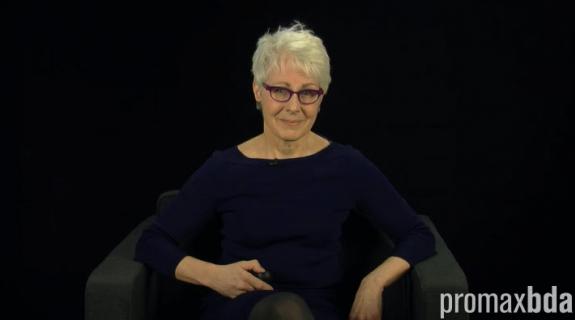One-to-one means more than just communication, according to Linda Button, brand personality expert at Tooth+Nail. It’s about knowing who you’re talking to, and if you’re really good, it means knowing who you’re talking with.
In Thursday’s PromaxBDA Master Class, “Make It Personal: The Next Trend in Effective Marketing,” Button identifies certain tips for writing across every platform, for every viewer.
For example, Netflix’s launch in Australia was accompanied by a spot starring Ricky Gervais, speaking openly about his role in the campaign, allowing Netflix to poke fun at itself while surreptitiously promoting the service launch.
Dove’s “Real Beauty” campaign addresses how women feel about their appearance as opposed to how they look, Button says, communicating with the consumers instead of talking down to them.
In the TV world, National Geographic Channel’s Killing Jesus campaign included an in-depth companion site that brought the viewer on a storytelling experience, encouraging further conversation with the network’s viewers and history fans.
“How his story unfolds has everything to do with who is telling the story,” according to Nat Geo’s site.
Button agrees with this notion wholeheartedly. “Who is telling the story matters, because it should change how we write.”
“Use the language of your audience,” she said. “Each person has a distinct voice – a view of the world that’s not like anyone else’s.”
Facebook’s TV campaign speaks to groups of friends to promote Facebook Friends – using specific experiences and inside jokes to portray what friendship means to all kinds of different people.
Button offers a similar example of Turner Classic Movies, who promotes monthlu programming through relaxed, conversational writing. An excerpt of TCM’s writing for its Fred Astaire month is below:
“Sometimes watching someone watch a film can be as enjoyable as watching the film itself. Does that make sense? Because I really loved watching my dad watch Fred Astaire. Not a graceful fellow, my father, nor could he carry a tune to save his life. But watching Astaire, he could neither sit still nor stay silent.”
“The days of the promo where you can string along an audience for the marketing message at the end are over,” Button said. Instead, “use pockets of fun” to keep viewers engaged all throughout the spot, blurb or site – the story arc is changing, she said, and “we need to keep delighting and surprising our audience” in order to keep the conversation going.
Twitter is a great place for this. Denny’s, for example, has cultivated a distinct voice on the platform. It is light, conversational and just silly enough to make people want to follow along.

On TV, she says, it’s hard for networks to connect to people, so you see specific shows doing it instead. It’s easier, and more natural, to connect to a character or a storyline than a larger network overall, so look for ways for your characters to speak to the audience instead.
“The next time you sit down to write a script, make it personal, said Button. “Talk one to one with your audience – be specific in their language, be humble and give them lots of pockets of fun along the way.”
Key Takeaways:
1. Learn to write for the new media landscape
2. Absorb the wisdom of sharing
3. Take inspiration from great examples on all platforms
Tune in to the next Master Class on Thursday, May 21 at 11 a.m. PT with Jesus Rodriguez’s “Who Needs a Budget to Be Creative?”
For more information about the Master Class series and other PromaxBDA member exclusives, visit promaxbda.org.
Tags:













































__twocolumncontent.jpg)











